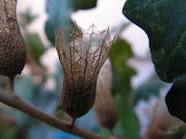Hyacinthus
This is a group of hardy bulbs that bloom in the spring. They are mostly natives of the Mediterranean region and the Orient. A few grow wild in tropical Africa. They have bright green strap-like leaves and long spikes with dense clusters of fragrant, colorful flowers that come in whites, blues, reds, yellows, and pinks. Hyacinths can be grown in gardens, greenhouses, or in pots inside. They can also be grown in glasses of water (preferably rainwater) and a few pieces of charcoal to keep the water sweet. The bases of the bulbs should be just above the water and they should be set in a cool, dark place until the roots are growing good. They should gradually be brought into a light area. Water should be added occasionally as needed. The large-flowered variety used for potting are great for growing in glasses.
Pot Cultivation
Early potting is necessary to provide the best and earliest flowers. Roman Hyacinths should be potted in late August, Cynthella Hyacinths in early September, and the large-flowered kinds at the end of September or early October. The best compost to use consists of three parts fibrous loam, one part each of decayed manure, leaf mold or peat moss, and coarse grit. If this soil mixture isn't available, then the best garden soil should be used and improved by adding to each bushel a peck of decayed manure and a gallon of coarse grit. 5- to 6-inch pots are adequate for these plants. Three bulbs of White Roman and Cynthella Hyacinths are potted in a 5-inch pot and five bulbs to a 6-inch pot. One bulb of the large-flowered varieties can fit in a 5-inch pot and three in a 6-inch. Over the drainage material a little rough fibrous compost is placed and then the prepared compost. The bulbs should be pressed firmly into the soil and be covered to three-quarters of their depth. The pots are then placed outside in a sheltered area, watered, and covered to a depth of 6-7 inches with peat moss, sand, or old coal ashes. In 6-8 weeks the bulbs will be well rooted and top growth will begin to grow.
They should then be placed in a cool, frostproof frame or greenhouse and shaded for a few days until the growths takes on their normal green color. They should then be exposed to light. After 10 days in the cold frame, several pots should be placed in a greenhouse or window garden beginning with Roman Hyacinths. If they are brought in at 10-day intervals there should be a continuous supply of flowers. They require a lot of water when they are growing freely. Hyacinths that can be grown in pots can also be grown in bowls of fiber. The fiber is a mixture of peat moss, charcoal, and chopped oyster shells. The bowls should be placed in a dark, airy room and the fiber kept moist for 6-10 weeks until the bulbs are established and top growth has begun. They won't be successful if they're placed in a closed, dry closet. Bulbs that have been grown in fiber do not need to be thrown out after they are done flowering. They can be planted outside after danger of frost has passed so they can die down naturally. Left undisturbed, they will flourish and bloom for many years. When planting Hyacinths in flowerbeds and borders, firm bulbs of medium size are preferable over large, loose bulbs. Hyacinths will thrive in well-drained, loamy soil in a sunny spot. October is the best month for planting. Well-decayed manure and compost should be mixed into the soil before planting. They should be set 9 inches apart and 5-6 inches deep. In early spring, when flower spikes begin to push up, they may need to be supported with stakes to prevent them from breaking during heavy rain and wind. These bulbs may be lifted carefully and dried off each year to help them last longer, but they gradually deteriorate anyway, and will eventually need to be replaced. Specially "prepared" bulbs of the large-flowering types can be used for forcing into early blooming. Prepared bulbs should be potted in September, placed in a cold frame, and covered with 6 inches of sifted weathered ashes, sand, or peat moss. Care must be taken to keep them moist by watering with a fine spray when necessary. After 6 weeks they should be removed from the ashes and stood in a dark place such as the covered benches of the greenhouse, in a temperature of 65 degrees. They should stay here until the flower buds are well clear of the bulbs, keeping them well supplied with tepid water, after which they are transferred to the benches. Shade them with a newspaper to encourage the development of the flower stems and raise the temperature to 70 degrees with no more of a 5-degree fall at night.
Propagation
Hyacinths can be grown from seeds sown in sandy soil in a cold frame in the fall. In 4-6 years, the bulbs will reach flowering size. This method is recommended for raising new varieties. Offsets and bulbils that develop on old bulbs are used to increase the stock. Deep crosscuts are made through the basal parts of the bulb prior to planting. The following year the bulbils are set out in a nursery bed; by this method flowering bulbs are obtained in three years.
 |
|
| H. albus |
|
VARIETIES
- H. amethystinus (brilliant blue, droopy flowers on 6-in. stems);
- H. ciliatus azureus (light to dark blue flowers on 4- to 5-in. stems);
- H. albus;
- H. azureus;
- H. lineata (blue flowers on 3- or 4-in. stems).
Following are named varieties of Hyacinth:
- City of Haarlem (yellow);
- Grand Maitre (blue); Jan Bos (red);
- King of the Blues (rich blue);
- Lady Derby (rose-pink);
- L'Innocence (white);
- Queen of the Blues;
- Queen of the Pinks;
- Winston S. Churchill (blue)
.





